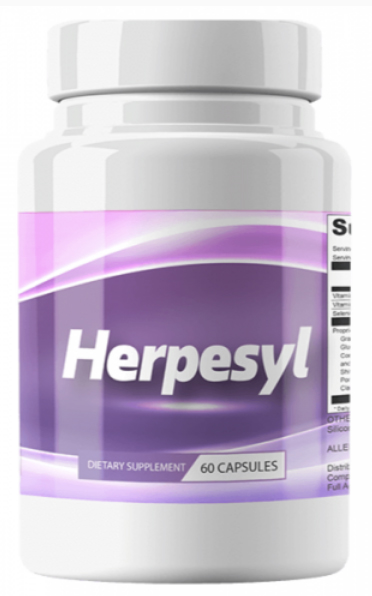People are often surprised to learn how common genital herpes is. And looking at the data, about 48 million Americans would be in for a surprise if they got tested today. So how common is herpes? These genital herpes statistics focus on HSV-2 rates in the United States. Fortunately, the data also shows that herpes is highly manageable and people who have it can still have healthy love and sex lives.
Medically reviewed by Meagan Fleming, RN on Jan. 1, 2019 — Written by Editorial Staff
How many people have genital herpes?
- About one out of six people in the United States has genital herpes.
- That’s about 55 million people in the United States who have genital herpes.
- 87-90% of people with genital herpes don’t know they have it.
- That’s more than 48 million Americans who are unaware they have genital herpes.
- Genital herpes is the second most prevalent viral STD after HPV.
Planned Parenthood states that 1 in 6 Americans has genital herpes. According to the American Sexual Health Organization, close to 90% of Americans don’t know they have genital herpes. (2) And according to the CDC, the statistic of infected people who don’t know is 87.4%.
Men vs. Women with genital herpes
- About 23.5% of women have genital herpes caused by HSV-2. (4)
- About 11.5% of men have genital herpes according to CNN. (5)
Female genitals are more susceptible to infection due to their exposed soft tissue.
Symptoms and Outbreaks
- A study showed that of infected women, 60% had never had any symptoms or outbreaks. (6)
- The average number of outbreaks in those who have them is 4 or 5 outbreaks per year. However, some people only have one or two outbreaks and never experience one again. (7)
- Asymptomatic carriers, those without outbreaks, can still spread herpes, though usually half as often as those who have symptoms. (8)
Transmission rates
An interesting note about HSV-2 transmission is that it’s often contracted within long-term relationships rather than through other high-risk considerations (9).
- The likelihood of passing genital herpes to a partner is highest during an outbreak (times when a sore is present).
- When a person is not experiencing an outbreak, there is a still a chance of transmitting it. Depending on the study, transmission rates when there are no symptoms vary between 4-30%.
According to studies done by Valtrex, these are the rates of transmission per year of regular sex:
- If partners avoid sex during outbreaks: 4% chance transmission from female to male; 8% male to female
- If partners also use condoms or antiviral medication: 2% female to male; 4% per year male to female
- If partners also use condoms and antiviral medications: 1% female to male; 2% male to female
Herpes Statistics in Specific Populations
- Genital herpes affects more Black than White Americans: 39.2% of the overall Black population, with 48% of Black women affected. (10)
- The largest increasing population is White teenagers.
- One in four American teenagers has an STD.
- 50-75% of unmarried American women between 45 and 50 have genital herpes. (12)
- Globally, an estimated 417 million people are infected with HSV-2. (13)
- Overall lifetime genital herpes occurrence rates are 25% among white women, 20% among white men, 80% among Black women and 60% among Black men according to 2003 data (14).
- Men who have sex with men are at a higher risk.
- HSV-1 is estimated to affect over 67% of the global population under 50.
Source: World Health Organization
How Common is Oral Herpes? HSV-1 Statistics
Though this article focuses on genital herpes caused by HSV-2, oral herpes is extremely common. In fact, many cases of genital herpes are caused by oral herpes, nothing more than a cold sore or contagious period that passed to the genitals through oral sex.
- 50-80% of Americans have oral herpes (HSV-1).
- About 50% of new genital herpes infections in women are actually caused by oral herpes from HSV-1 (15).
Conclusions
The big takeaways from these numbers are that:
1. Herpes is more common than many might think, and a lot of people are unaware they are infected and may not even have symptoms to tip them off. Unfortunately, when clinicians give “standard” STI check-ups, they don’t include tests for HSV-1 or HSV-2, unless it is specifically requested.
2. Many couples have a healthy sex life and still never transmit it to the uninfected partner. Taking precautions like avoiding sex during and around the time of an outbreak, using condoms and taking antiviral medication like valacyclovir (Valtrex) or Acyclovir drastically reduces the likelihood of transmission. The statistics indicate that it’s possible to get your chances of transmitting HSV-2 down to as low as 2.1% with condoms and antiviral medications.
3. Take charge of your sexual health and get regularly screened for STIs. You can specifically request a herpes test if the practitioner does not include it in standard checkups and you feel you need treatment. You can even order tests online:
Order STD / STI Tests Online:
- Same-Day Lab Tests: Since we’re an affiliate of STDcheck, you can use this link to have our coupon automatically applied.
- Mail-In Test Kit: Nowadays, services like myLAB box will even send you a mail-in test kit so you can test yourself at home. Pick one of their test kits here.
Note: Not all genital herpes statistics are consistent from study to study. Most say 25% of American women have the virus, and 20% of American males. Other studies show slightly lower numbers. The studies with slightly lower numbers refer to people from 14 to 49, while the higher number studies are based on all people over 12. As populations age, there is a higher incidence of STIs.










Comments are closed.